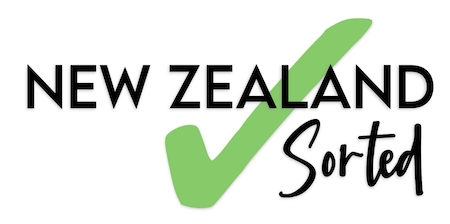In light of COVID-19, borders around the world look significantly different now than they did a few short years ago.
NEW ZEALAND IS CURRENTLY UNDER LEVEL 2 & 3 RESTRICTIONS.
UPDATES NOVEMBER 2021. MIQ is being phased out for fully-vaccinated returnees.
From 11.59pm on 16 January 2022, New Zealanders (and other eligible travellers) will be able to return from Australia to New Zealand without entering into MIQ. These same travellers will be able to travel from all other countries (aside from the few considered ‘very high risk’) from 11.59pm 13 February 2022.
From 11.59pm 30th April 2022, foreign nationals (including business and leisure travellers) will be allowed into New Zealand.
Travellers will be required to undergo 7 days self-isolation. They will also need to provide proof of vaccination status and a negative departure test, along with two additional negative tests during isolation.
People who do not fulfil the above conditions, but are eligible to return to New Zealand, will be required to enter into managed isolation (MIQ) for a period of a week.
UPDATES OCTOBER 2021. Both the trans-Tasman bubble (from Australia to New Zealand) and the Cook Islands bubble has been paused. Quarantine-free passage to/from Australia and the Cook Islands in and out of New Zealand is currently suspended. The Cook Islands have signalled that travellers from New Zealand will need to be fully vaccinated to be allowed in, when borders reopen 14th January 2022. Currently people are allowed to travel from the Cook Islands to New Zealand – they are not allowed back, however.
Auckland is currently under Level 3 restrictions. Leisure travel in and out of these areas is not currently possible and people in these areas are required to stay home with few exceptions.
The rest of New Zealand is currently under Level 2. This means people are able to travel for leisure purposes, with additional restrictions.
MIQ bookings are open again. The lobby system has been released, providing those who are eligible to enter to enter a lottery system.
Air New Zealand have announced a new policy regarding the COVID-19 vaccine. Passengers over 18 years of age will need to be fully-vaccinated in order to fly internationally – both in and out of New Zealand. Only those with a medical exemption will be excluded from this requirement.
Can people travel to New Zealand as tourists, like they once did?
The answer to that is not an easy one.
Yes. No. Possibly. It all depends on where you are travelling from and your citizenship.
This article will break down the current border restrictions for people entering New Zealand. Please take your time and read them carefully before booking any travel to Aotearoa.
Jump straight on in...
Is it Possible to Travel to New Zealand Right Now?
Leisure travel to New Zealand is nowhere near as open as it was pre-COVID. In fact, it is generally not possible to travel to our country unless you fit into a few very distinct categories – and even then, there are restrictions and caveats to doing so.
The majority of people that used to be able to enter New Zealand are no longer able to do so – even if vaccinated and/or willing to pay for managed isolation. Please read this information in full before booking your vacation to Aotearoa.
If you are hoping to travel using the bubble, please check that it is currently operating. NZ/Australia. NZ/Cook Islands.
Arriving in New Zealand
What is a travel ‘Bubble’?
Two countries, allowing quarantine-free travel between one another are referred to as a bubble.
People are able to move freely between them without the need to self-isolate – this allows passengers to hop off the plane and go about their day in the other country without restriction (or significant chance of infection).
What countries are inside of ‘the Bubble’?
New Zealand currently has a bubble set up with Australia (known as the Trans-Tasman bubble) and the Cook Islands (which includes Rarotonga).
This makes it possible for people currently in New Zealand to travel freely to and from Australia and the Cook Islands.
It is important to note, however, that the bubble can be paused at any stage (and on short notice) if COVID becomes an issue in any community.
Quarantine free travel will not be what it was pre-COVID-19, and those undertaking travel will do so under the guidance of ‘flyer beware’. People will need to plan for the possibility of having travel disrupted if there is an outbreak.
Just as we have our Alert Level settings for managing cases in New Zealand, we will also now have a framework for managing New Zealanders in the event of an outbreak in Australia, which involves three possible scenarios: continue, pause, suspend.
The New Zealand Government
Visitors Travelling from Within ‘the Bubble’ – No Need to Isolate
People travelling between New Zealand and Australia or the Cook Islands are able to do so freely (unless the bubble is paused). Travel does look different now though, so it’s important that you are aware of additional requirements.
Check the most current information about travelling between New Zealand and Australia.
Check the most current information about travelling between New Zealand and the Cook Islands.
Please ensure you check all travel requirements for your specific bubble. Most importantly, keep an eye on the sites above to ensure that your bubble is functioning and that it is not paused.
Did you know? It is possible to travel from Niue to New Zealand without entering into quarantine. This is a one-way arrangement only though.
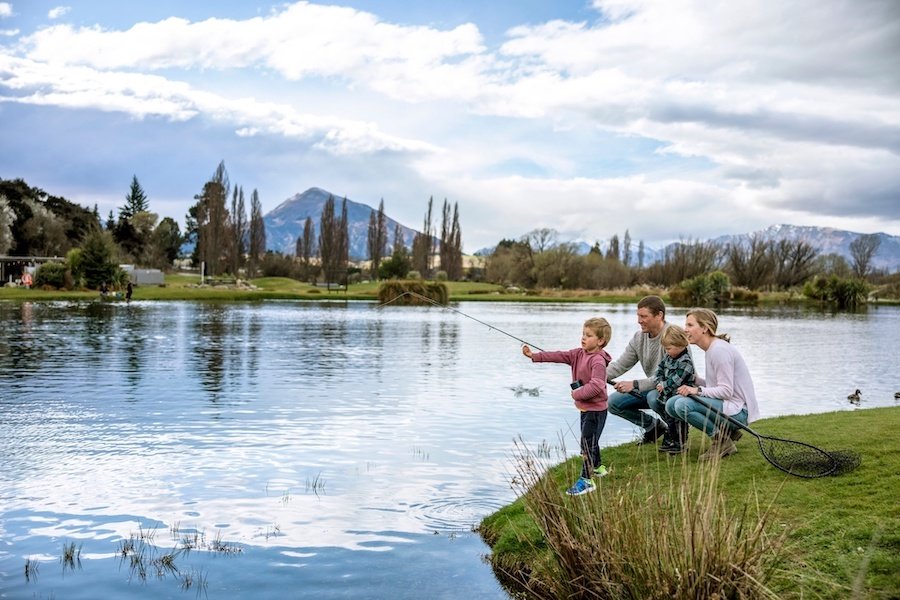
New Zealand Citizens Travelling from Outside of ‘the Bubble’ – Isolation Required
If you are a New Zealand citizen or a New Zealand resident with valid travel conditions, you are able to return to Aotearoa. In addition, should you have a critical purpose visa, you will be eligible for entry – please note, this needs to be approved in advance and is not the same as a tourist visa.
If you fall into one of these categories (which most Kiwis do, along with people who have been based in New Zealand), you will be eligible to return to New Zealand.
As you’ll be travelling from outside of our travel bubble, you will be required to enter into managed isolation. This requires a stay of 14 days in a speciality hotel. During your stay, you will be tested for COVID-19 on a number of occasions – this is a condition of your stay.
Pre-Departure Testing for People Travelling from Outside of the Bubble
Most people must have a negative COVID-19 pre-departure test result before travelling to New Zealand. Some people do not need to get pre-departure tests.
Read about the requirements for pre-departure testing for travellers to New Zealand.
Is it Possible to Transit New Zealand on the Way to Somewhere Else?
In many cases, transit through Aotearoa is allowed, on the condition that it is under 24 hours. This is not always the case though.
Read about transit flights through New Zealand.
Booking Your Flights and Stay in Managed Isolation
You are legally required to have a voucher before flying to New Zealand. Your voucher allocates you a place in a managed isolation facility.
Airlines will not be permitted to board you if you do not have a voucher unless you are exempt from using the Managed Isolation Allocation System.
Register for a voucher for managed isolation ahead of your travels. Vouchers are made available approximately 3 months in advance – many have had significant difficulty attaining their vouchers though so it is best to be flexible if possible.
A lobby system has been introduced. This requires would-be bookers to visit the MIQ website at a set time. A position in the queue will then be randomly allocated – this gives everyone an equal chance of booking a room.
It is important to note that many people are currently missing out on securing rooms.
If your preferred arrival date in New Zealand is available, a 14-day stay in managed isolation will be held for 48 hours. During this period (and only then) should you organise your flights to Auckland.
Do not book your flights before securing a stay in MIQ.
Pro tip: Join New Zealand Hotel Quarantine on Facebook to connect with others that have undertaken this same journey through managed isolation. The community is a wealth of knowledge!
Request an Emergency Allocation for Managed Isolation
Space in managed isolation is extremely limited. An emergency allocation process exists for limited situations that require urgent travel to New Zealand within the next 14 days.
This process is far from guaranteed though, as few requests are actually granted – in fact, many people with legitimate reasons have been turned down. It is best to secure your stay via the normal booking system if at all possible.
Read about requesting an emergency isolation allocation.
What is Included in my Stay in Managed Isolation?
Your stay will include
- accommodation
- food
- transport and operational and support costs.
Your stay may be in a number of locations around New Zealand. If this is the case, the government will arrange to transport you to managed isolation (at no extra cost) and back to Auckland. If you require onwards domestic travel, it is suggested you only book this once in isolation.
Will I Need to Pay For Managed Isolation?
If you are eligible for managed isolation there may be a cost. Some are required to pay for their stay, whilst others are not.
The following rules generally apply:
- If you are not a New Zealand citizen or resident, you will be required to pay.
- If you are a resident/citizen and you left the country from the 11th of August 2020 onwards, you also will have to pay to stay in isolation.
- If you are a resident/citizen and you left New Zealand before the 11th of August 2020 and are planning to stay more than 180 days upon your return (approx 6 months), then your charges will be waived.
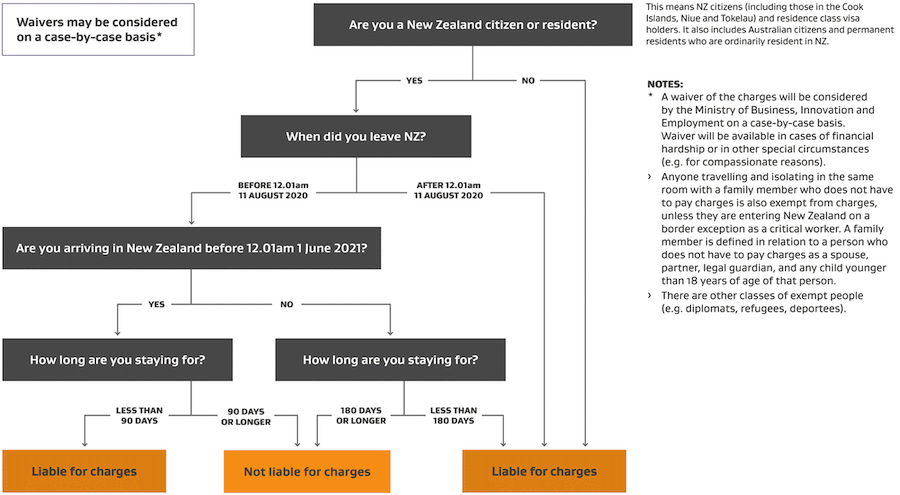
How Much Does Managed Isolation Cost if I am a NZ Citizen or Resident?
$3,100 for the first or only person in the room (whether that is an adult or a child) plus $950 for each additional adult and $475 for each additional child (3-17 years old, inclusive) sharing that room, all GST inclusive. There will be no charge for children under the age of 3.
If you are liable to pay, you will be charged per room.
The New Zealand Goverment
How Much Does Managed Isolation Cost if I am Entering New Zealand Under a Different Condition?
If you are a critical worker or are entering on a temporary entry class visa (on a visitor visa – such as partners of a New Zealand citizen or resident, student visa, work visa or limited visa), you can check the costs for your stay.
It is important to note that managed isolation is not open to anyone willing to pay. Tourists are not currently able to opt into managed isolation as a means of gaining entry to New Zealand, even at a cost.

Everyone Else Outside of ‘the Bubble’ – Travel Not Possible
If you are not travelling under one of three aforementioned categories (citizenship, residency with valid conditions or under a critical purpose visa) and are not travelling from within Australia, the Cook Islands or Niue, you will fit into this category.
If you fit into this category (and the majority of international leisure travellers do, you will not be granted access to visit New Zealand for the time being.
Most people around the globe fit into this category. At this stage, most people are unable to travel to New Zealand, even if vaccinated and/or willing to pay for managed isolation.
Responding to COVID-19 in New Zealand: The Level System
New Zealand operates under four different levels. Generally, the same level is experienced right across the country, but the level can vary if an outbreak is limited to one region.
Each level becomes most restrictive and builds upon the last.
These alert levels give guidance as to what people in New Zealand at the time are able to do.
Check New Zealand’s current Alert Level.
Level 1
At Alert Level 1 we all need to be ready in case COVID-19 reappears in our community.
Maintain good hygiene, keep track of where you’ve been and who you’ve seen (using the COVID Tracer app), stay at home if you’re unwell and get a test if you have COVID-19 symptoms.
At this level, face coverings legally must be worn:
- on public transport
- on domestic flights
- by taxi and ride-share drivers — while it’s not compulsory for passengers to wear them, it is strongly encouraged.
There are exemptions for some people and services.
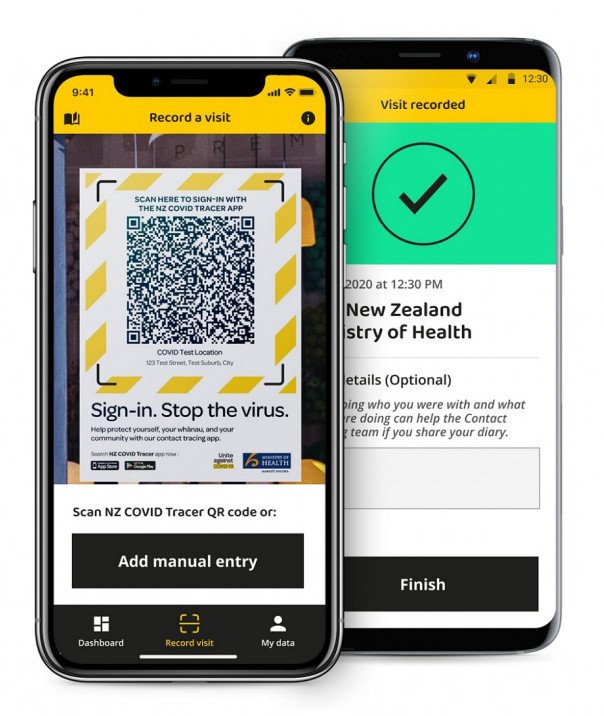
Read more about life at Alert Level 1.
Level 2
At Alert Level 2, you can leave home, but you should follow public health measures and consider others around you. Keep your distance when outside your home. Covid may be in our community.
You can travel locally, but make sure you do it in a safe way.
You should not travel if you have cold, flu or COVID-19 symptoms, are awaiting a test or if you need to self-isolate.
You can travel to other regions that are at Alert Level 2 or lower.
You should keep a distance of at least:
- 2 metres in public and in retail stores, like supermarkets and clothes shops
- 1 metre in most other places like workplaces, cafes, restaurants and gyms.
At Alert Level 2 the risk of COVID-19 being present in the community is higher. So, wearing a face-covering is more important.
You legally must wear a face covering on public transport and on domestic flights and are encouraged to wear face coverings in situations where physical distancing is not possible, like in shops.
You cannot have more than 100 people at social gatherings, including weddings, civil union ceremonies, birthdays, funerals and tangihanga.
Read more about life at Alert Level 2.
Level 3
At Alert Level 3 COVID-19 is in our community.
Stay home if you can to avoid any risk of spread. You must work from home unless you’re not able to. Children and young people should learn from home.
At Alert Level 3, you legally must stay within your household bubble whenever you’re not at work or school. You can expand this to connect with close family and whānau, bring in caregivers or support isolated people.
It’s important to protect your bubble. Keep your bubble exclusive and only include people where it will keep you and them safe and healthy. If anyone within your bubble feels unwell, they legally must immediately self-isolate from everyone else within the bubble.
Do not invite or allow social visitors, such as friends, extended family and whānau, to enter your home.
You can travel within your local area, for example going to work or school, shopping, or getting exercise. Your local area means the area near your home that you regularly visit for essential services. What is considered local will differ depending on where you live. City dwellers may have a supermarket or dairy close by. If you live rurally, you may need to take a drive to reach these.
Public transport can continue to operate with strict health and safety requirements.
At Alert Level 3 travel between regions is heavily restricted.
Gatherings of up to 10 people can continue, but only for wedding services, funerals and tangihanga.
Public venues legally must close. This includes libraries, museums, cinemas, food courts, gyms, pools, playgrounds and markets.
Read more about life at Alert Level 3.
Level 4
At Alert Level 4, it is likely COVID-19 is not contained.
Range of measures that can be applied locally or nationally
- People are instructed to stay at home in their bubble other than for essential personal movement.
- Safe recreational activity is allowed in local area.
- Travel is severely limited.
- All gatherings are cancelled and all public venues are closed.
- Businesses are closed except for essential services – for example, supermarkets, pharmacies, clinics, petrol stations and lifeline utilities will stay open.
- Educational facilities are closed.
- Rationing of supplies and requisitioning of facilities is possible.
- Reprioritisation of healthcare services.
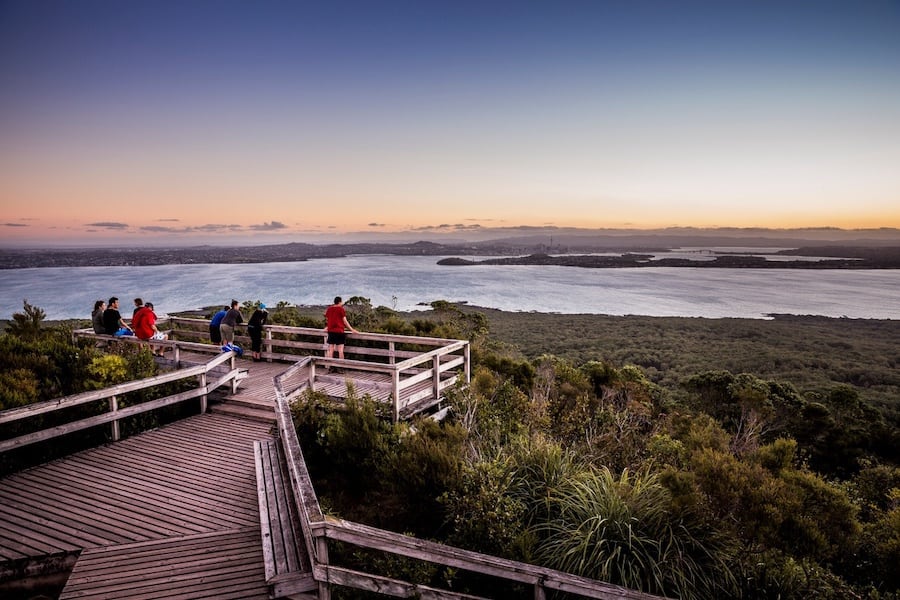
When will New Zealand’s Borders Open Freely for Tourism Again?
Ultimately, nobody is able to answer this question with clarity.
Given the fact that New Zealand has chosen an elimination strategy, it is unlikely that borders will open freely until the rest of the world has the virus under control.
Additional bubbles have been discussed but at this stage, no further details have been given.
Please continue checking for updates.
Travel Tips Given the Current Climate
The following tips may be useful when booking your travel to New Zealand.
- When making new bookings for accommodation, tours and activities, be sure to check cancellation policies. Booking.com generally has a flexible 24-hour cancellation policy, for example, but be sure to double-check each property before making a booking. Most activity and tour operators in New Zealand now have flexible refund/rebooking policies, but again, we suggest you confirm their policies before booking.
- If you have existing bookings, check your cancellation policies for each activity, write down the deadlines and stick them on your fridge (or better yet, set a remind on your phone). You’ll want to ensure you don’t forget to cancel or extend – don’t lose your hard-earned money.
- When travel does open up again, be sure to book ahead of your visit – some New Zealand businesses are running reduced hours (and may be closed during the week), so by booking in advance, you’ll be sure to secure your spot on a day/time that suits.
Where to Look For Further Information and Reliable Updates
We recommend keeping up with the following information:
- Unite Against COVID-19 – The official COVID-19 website (published by the New Zealand Government).
- Managed Isolation and Quarantine – The official website for all managed stays in New Zealand.
- The NZ Ministry of Health – Information about COVID-19 in our community and what to do if you think you may have contracted the virus.
- New Zealand Immigration: Relating to COVID-19 and visas.
- 100% Pure New Zealand – The New Zealand tourism board has additional information relating to COVID-19.
- Stay up to date with local news. Suggested newspapers: The New Zealand Herald and Stuff. Suggested local TV broadcasts: 1 News and Newshub 6pm (TV3).
- Facebook groups. New Zealand Hotel Quarantine and New Zealand Travel Tips (NZTT).
Whilst We Wait for Life to Return to Normal, You Can Still Plan for An Incredible Trip to NZ!
- Check in with New Zealand Travel Tips, our online community, for travel tips and savings.
- Read our blog and request specific content if there’s anything we can help you with.
- Let us help you plan the trip of the lifetime, ready for when travel to New Zealand does reopen!
Kia kaha everyone!
This post was created by New Zealand Travel Tips.
